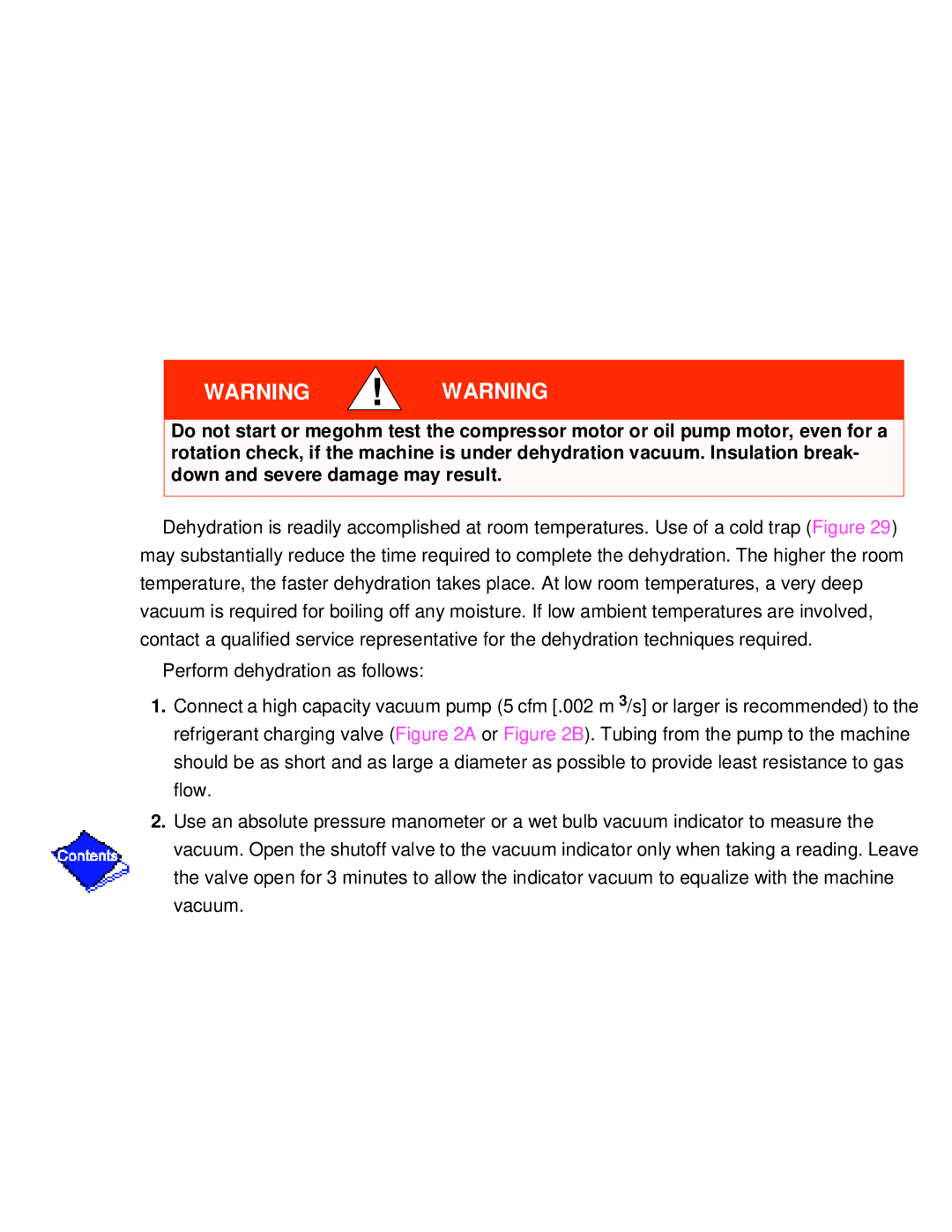
WARNING ! WARNING
Do not start or megohm test the compressor motor or oil pump motor, even for a rotation check, if the machine is under dehydration vacuum. Insulation break- down and severe damage may result.
Dehydration is readily accomplished at room temperatures. Use of a cold trap (Figure 29) may substantially reduce the time required to complete the dehydration. The higher the room temperature, the faster dehydration takes place. At low room temperatures, a very deep vacuum is required for boiling off any moisture. If low ambient temperatures are involved, contact a qualified service representative for the dehydration techniques required.
Perform dehydration as follows:
1.Connect a high capacity vacuum pump (5 cfm [.002 m 3/s] or larger is recommended) to the refrigerant charging valve (Figure 2A or Figure 2B). Tubing from the pump to the machine should be as short and as large a diameter as possible to provide least resistance to gas flow.
2.Use an absolute pressure manometer or a wet bulb vacuum indicator to measure the vacuum. Open the shutoff valve to the vacuum indicator only when taking a reading. Leave the valve open for 3 minutes to allow the indicator vacuum to equalize with the machine vacuum.
